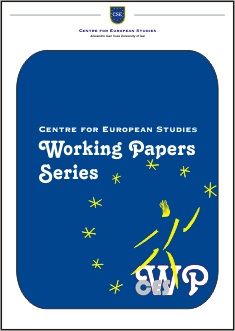SOCIAL SECURITY IN ROMANIA AFTER EU ACCESSION. RISKS AND TRENDS
SOCIAL SECURITY IN ROMANIA AFTER EU ACCESSION. RISKS AND TRENDS
Author(s): Ciprian PanzaruSubject(s): Economy
Published by: Editura Universităţii »Alexandru Ioan Cuza« din Iaşi
Keywords: social security; sustainability; migration; European integration; pension systems
Summary/Abstract: This article reflects the evolution of the social security system in Romania after accession to the European Union. Social security states its specificity as a basic concept that encompasses all the collective measures established by legislation to maintain individual or family income, to provide income when some or all sources have been lost or exhausted or in cases where the individual must cope with increased expenses. From this perspective, social security is a system that takes into account both the protection of able-bodied people (by the social insurance system) and of those who cannot work or are socially disadvantaged. For Romania, the social security system is currently profoundly affected due to the low ratio between the number of productive Romanian citizens, contributors to the public budget and social funds, and the beneficiaries of these funds. The study highlights this issue and focuses primarily on the effect produced on the social security compo nent by the external labor migration, a phenomenon accentuated by Romania’s EU accession. Basically, Romania has registered, according to Eurostat, only after 2007, more than 1 million migrants, most constituting the economically active population, the phenomenon having a major impact on the sustainability of the social security system.
Journal: CES Working Papers
- Issue Year: 3/2011
- Issue No: 2
- Page Range: 314-329
- Page Count: 16
- Language: English

